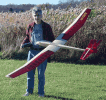|
While
it is difficult to quantify lightning losses, it is estimated that $4-5 billion damage occurs
each year. Likewise, the cost of lightning protection to safeguard critical equipment and facilities
from lightning strikes during severe weather is enormous. Lightning - the most dangerous
and most frequently encountered weather hazard most people experience each year - is the second
most frequent weather-related killer in the United States. About 100 people lose their lives
and more than 500 are injured by lightning every year. Most casualties result from inappropriate
behavior during thunderstorms, particularly when people are caught outdoors during recreation
or organized sports. Being aware of - and following - proven lightning safety guidelines can
greatly reduce the risk of injury or death. -
NOAA National
Severe Storms Lab
Excerpt from the NOAA National Severe
Storms Laboratory... What does lightning do to people?
Cloud-to-ground lightning can kill and injure people by direct or indirect
means. It is not known if all people are killed who are directly struck by the flash itself.
The lightning current can branch off to a person from a tree, fence, pole, or other tall object.
In addition, flashes may conduct their current through the ground to a person after the flash
strikes a nearby tree, antenna, or other tall object. The current also may travel through power
or telephone lines to a person who is in contact with electric appliances, tools, electronics,
or a corded telephone. Lightning can also travel through plumbing pipes and water to a person
in contact either with a plumbing fixture or a person in water, including bathtubs, pools, and
the running water of a shower. Damage to the human body: Lightning
affects the many electrochemical systems in the body. People struck by lightning can suffer
from nerve damage, memory loss, personality change, and emotional problems. There is a national
support group for lightning and electric shock survivors. An example is some single
nerve cells, such as those extending from the brain to the foot, can be as long as 6 feet or
more. These types of cells are most prone to lightning damage due to the instantaneous potential
difference across the length of the cell as lightning begins to enter the body. The
intense heat of the lightning stroke can turn sweat instantly to steam and the tremendous pressure
of the steam has been known to blow people's boots, shoes, and clothing off them. In places
where metal is in contact with or close proximity to the body, such as jewelry or belt buckles,
burn marks are found. Likewise, burn marks are found in places where the body had been sweaty,
such as the feet, underarms, and chest. How to stay safe when lightning is around - "If
you can hear it, fear it!" The best defense is plan ahead and avoid exposure to lightning
when a thunderstorm occurs. Know where safe shelter is located and leave enough time to reach
safe shelter before your danger level is high. Don't be an isolated tall object, and don't be
connected to anything that may be an isolated tall object.
USE THE 30-30 RULE!
- 30 seconds flash-to-bang - time to take shelter!
- 30 minutes after the last thunder is heard - safe to resume activities.
|
|








